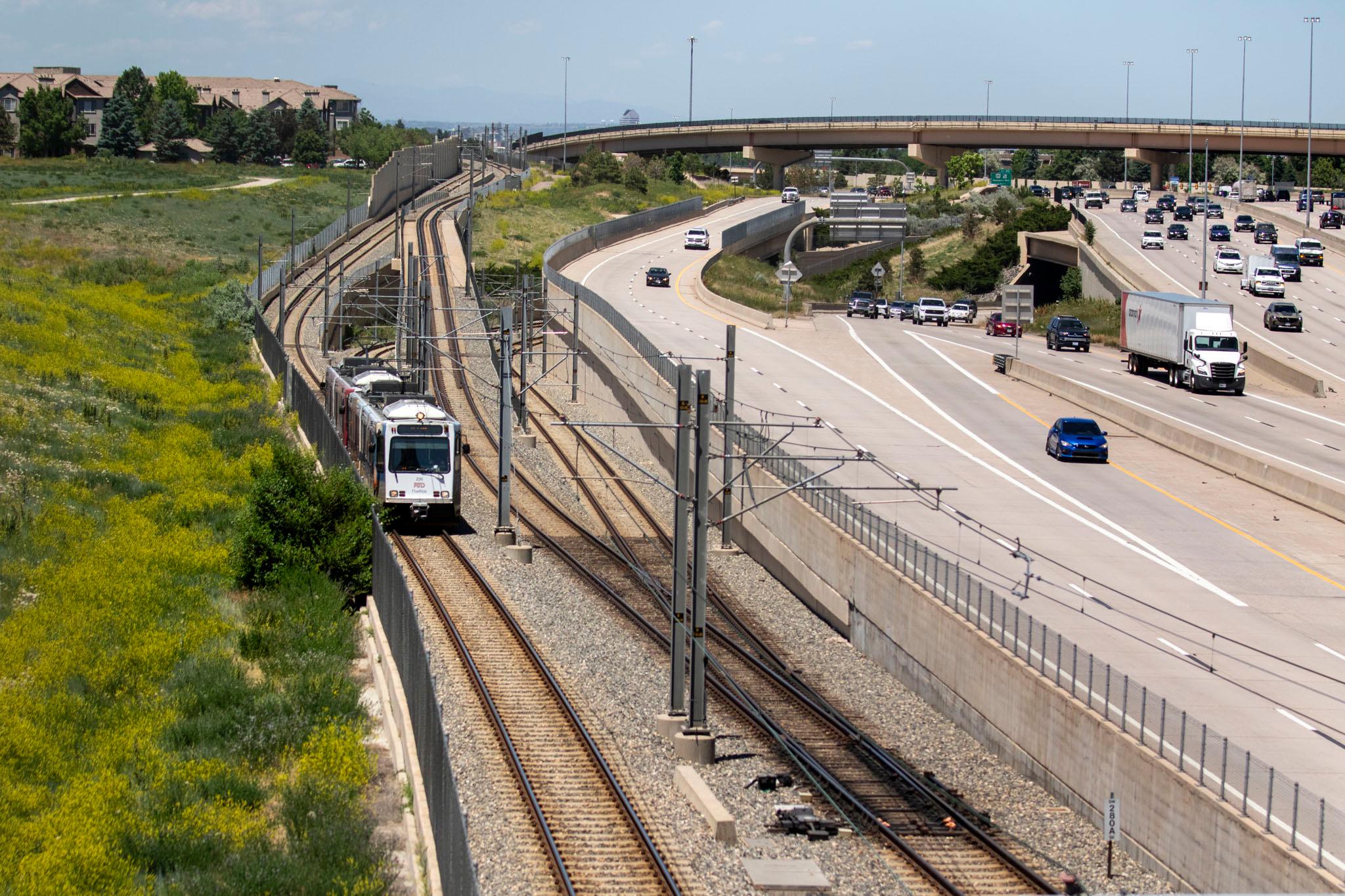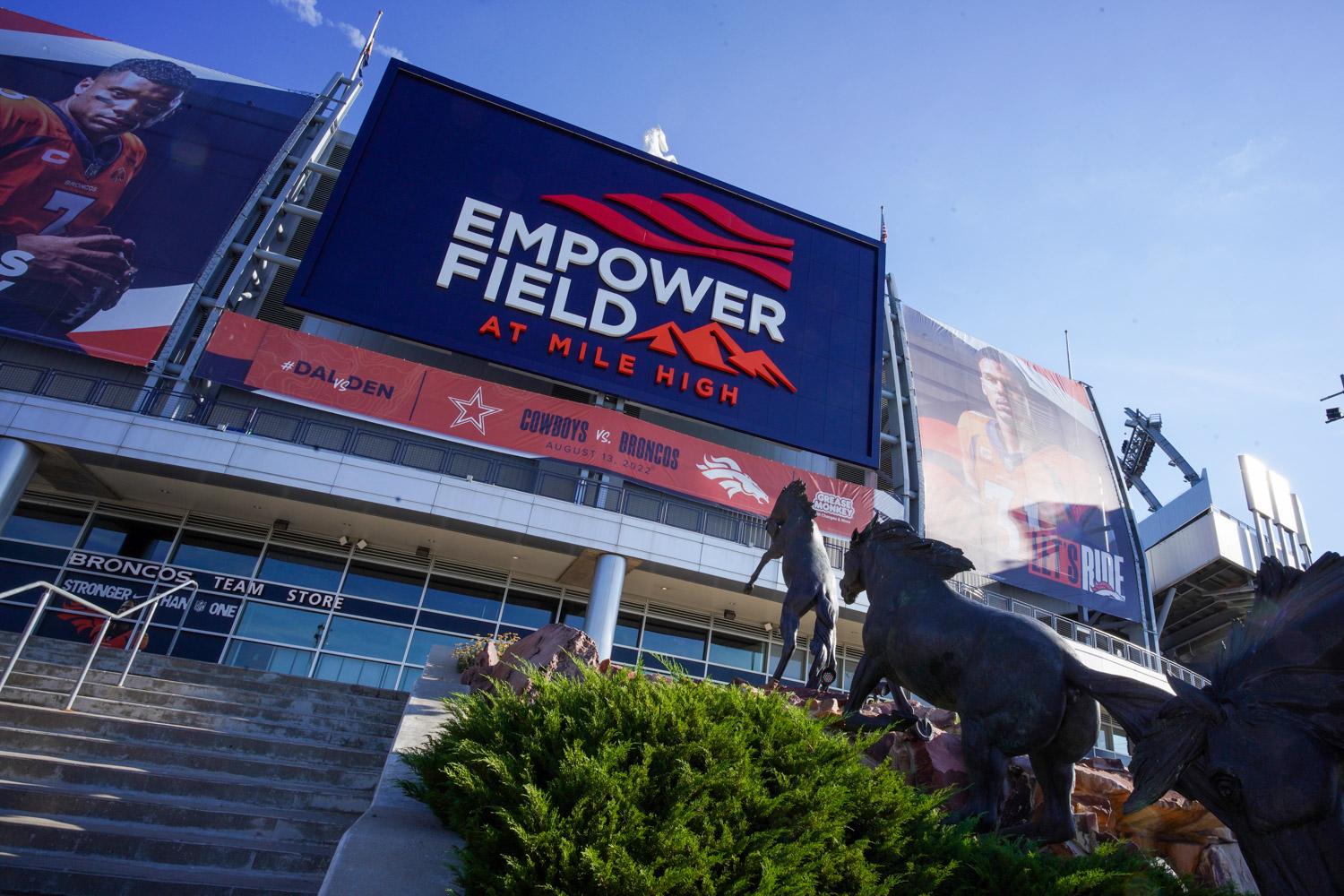
It’s looking likely that Regional Transportation District light rail trains on its southeast corridor will continue to shuffle between some southern stations at just 10 mph for the foreseeable future.
Frustrated RTD customers, board members and advocates pushed the transit agency’s brass for details on why trains on parts of the E, H and R lines were rolling so slowly and when they might return to normal, usable speeds during a public meeting late Wednesday.
“Trains that run 10 mph [are] not considered transportation in my opinion,” said board member Jaime Lewis. “My wheelchair operates at 7 mph.”
Passenger Joe Meyer told the board committee he planned to ride his bicycle from Union Station to his office near the end of the E Line — a distance of nearly 20 miles — because he can likely pedal faster than the train.
“That’s not acceptable,” he said.
RTD crews are working as quickly as they can, said Dave Jensen, the agency’s assistant general manager of rail operations. He said the agency hoped to make “significant” progress on the issue over the summer but declined to commit to a deadline for when repairs would be completed.
“What I won’t do is make promises that we can’t keep,” Jensen told a board committee.
Members of the Colorado Public Utilities Commission, the safety regulator that provides oversight of RTD’s light rail system, were also told Wednesday that there’s “no end date in sight” to the slowdowns.
“We should expect this to be the condition for a while,” Pam Fischhaber, the PUC’s chief of rail and transit safety, told commissioners.
The unclear timeline for these apparently unexpected repairs are compounding riders’ woes on a light rail system that’s already facing significant maintenance disruptions elsewhere. But a week after the slow zones first took drivers and passengers by surprise, officials are saying more publicly about why they are happening.
RTD’s light rail system isn’t that old. But postponed maintenance is catching up with it
Agency brass made a splash in May by touting a $152 million rebuild of large sections of track that has taken the entire downtown Denver light rail loop offline this summer. Built in the early 1990s, it’s the oldest part of the light rail system. A separate repair job is severely limiting service on the E and H lines.
The agency’s current CEO and general manager, who took the reins in 2020, has lightly criticized previous RTD leaders for focusing too much on rail expansion and has committed the agency to improving maintenance and tackling overdue repair projects.
The utilities commission has also ordered RTD to clean up its act. It told RTD to improve its light rail maintenance after the agency reported in 2022 that its track at 19th and Stout streets had disintegrated to the point that trains could only travel at 3 mph until it was replaced
In October 2023, RTD told the commission it would adopt track standards set by the American Public Transportation Association. In May, Jensen said RTD inspectors began riding the entire light rail system twice weekly and walking the entire system every 90 days.
The first wave of the more intense inspections revealed sections where the ballast — the rock that supports rail ties and track — needs adjustment, Jensen said. Inspectors also found “rail burns,” small divots where slipping train wheels have melted the track’s surface.
“Everything is structurally fine,” Jensen said. “But absent any kind of intervention, those spots in the rail will turn into cracks. And those cracks will turn into breaks … We're taking a proactive approach as opposed to a reactive approach in the way that we're managing the railroad.”
The newly adopted track standards require 10 mph slow zones after rail burns are found and that seriously burned track be replaced. Fischhaber, with the utilities commission, told commissioners Wednesday that “there’s a number of sections” that need replacement.
“They are getting material ordered and they will be getting those repairs made as soon as they can,” she said.
In the meantime, passengers want replacement bus service. RTD says it can’t do that
Lewis, who sits on the RTD board and is a long-time transit user, pushed agency officials to run buses along Interstate 25 between the Broadway station and stations to the south.
“I'm just pretty baffled right now at staff's lack of creativity, lack of contingency plan, and lack of respect for riders,” he said. “I just find this unacceptable.”
Fred Worthen, RTD’s assistant general manager of bus operations, said making significant changes to bus schedules would violate the agency’s collective bargaining agreement with its drivers. He also said that the agency doesn’t have the staff for replacement buses, either.
“We're talking about dozens of buses,” he said. “We're in the peak vacation season right now and we are just right at the staffing levels we need just to make core pullout.”
The agency has instead partnered with the Colorado Department of Transportation, which is allowing riders to use their RTD fares on its parallel Bustang route.
It’s possible that slow zones will spread to other lines as inspections continue. If that happens, board member JoyAnn Ruscha told staff, RTD needs to be far more proactive about communicating than it has been so far.
“I'm hearing you loud and clear to communicate and over communicate,” replied Jensen, RTD’s rail boss. “We will work on that.”









